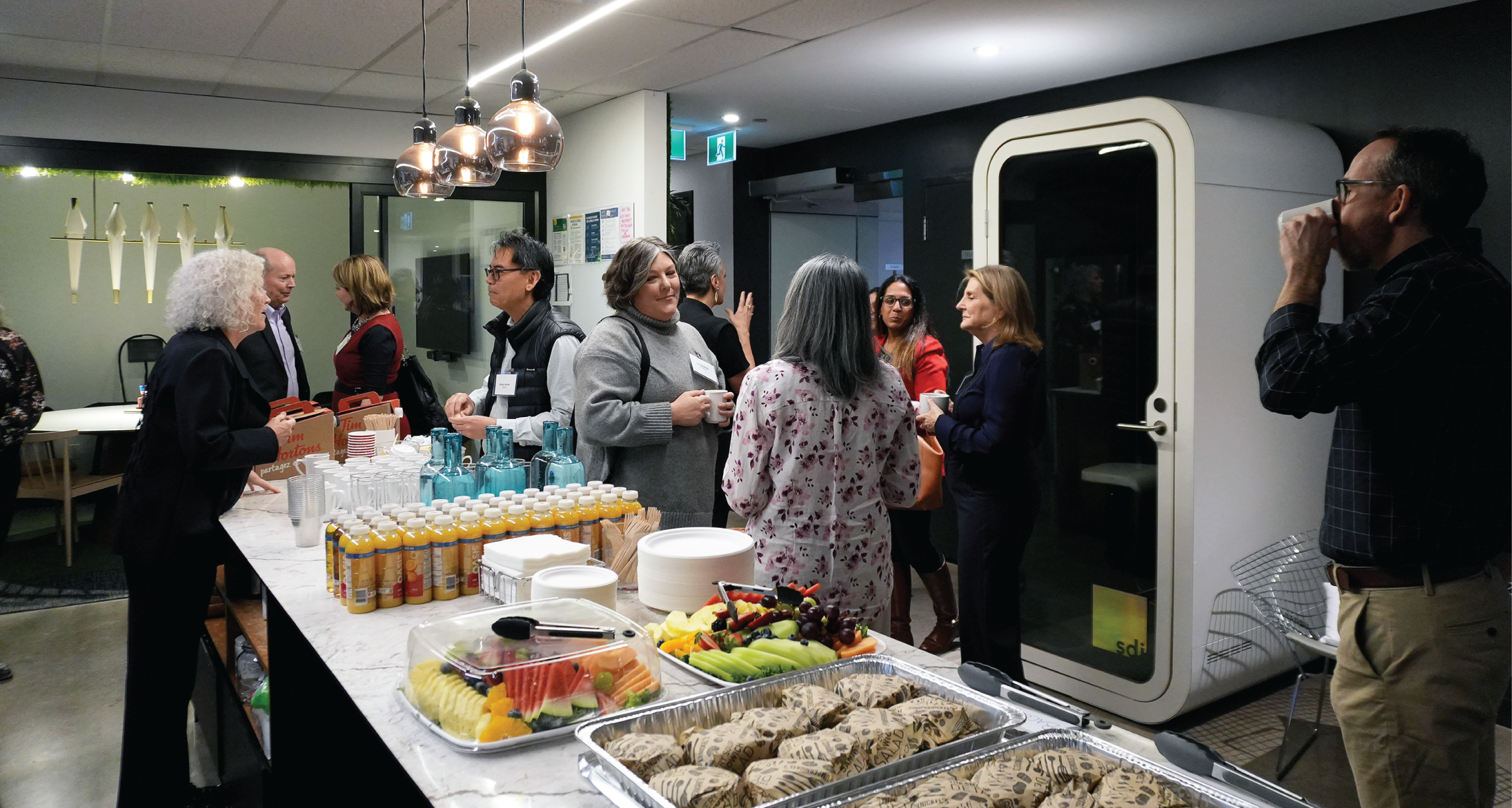In terms of commercial real estate, the warehouse/distribution asset class has been a major winner during the COVID-19 pandemic, with an explosion in e-commerce and essential products being the primary drivers of demand. While these sectors have clearly benefitted, the pandemic effect has been uneven in other industries. A good example is the Food & Beverage (F&B) industry as the grocery and big box segment has flourished and transformed, while manufacturing, processing and restaurant related companies have struggled more, and faced a significant amount of change to their business over the past year.
The pandemic has accelerated/forced significant changes in consumer behavior – mainly people choosing to eat more meals at home and purchase more groceries online. This has resulted in a big slowdown for the restaurant sector (especially urban) and resulted in an increase in purchasing goods through the grocery and prepared food channel. Grocery sales jumped from $1.2 billion in August 2019 to $7.2 billion in June 2020, with the e-grocery industry accelerated by five to seven years in a five-to-seven-month period (source).
The spending shift from services (restaurant) to goods (grocery), combined with increased digital purchases, has put pressure on F&B companies and transportation and logistics providers to meet demand.
Additionally, as COVID regulations have evolved week to week and state to state, there have been peaks and valleys in foodservice demand. In trying to predict the re-opening or rebounding of restaurant traffic, foodservice distributors many times need to make presumptive orders, which has resulted in difficulty forecasting for actual demand and has sometimes led to product surpluses or shortages. Across the board, demand planning in the F&B sector has never been more challenging.
Operational challenges
With changes in demand, many food manufacturing plants have been running at levels they have not experienced before, increasing operational risk. Additionally, one of the greatest risks to F&B companies this past year was in keeping their workforce healthy and on the job.
The organizations who have fared the best have been the ones who took the pandemic seriously from the onset and been strict about cleaning/sanitizing, social distancing, physical barriers, and proactive quarantining. To accommodate social distancing while trying to get to the same production and fulfillment throughput, some F&B companies have reconfigured the workday, with more hours and fewer employees per shift. Others have taken additional space and hired more workers (think Amazon).
In coping with the long-term nature of these changes, many F&B companies are accelerating automation projects. Not just for cost savings, but because of the ability to run a facility more flexibly and efficiently. “In evaluating the heightened risk of losing a large percentage of our workforce to illness at any given time, we are fast-tracking several projects to increase the level of automation in our plants and DCs,” said the Director of Distribution at one major food distributor. “Older industrial real estate assets are not conducive to today’s robotics and automation, which will play a part in the real estate decision making process for manufacturers and logistics companies.”
Cold storage
The acceleration of online grocery shopping and home delivery has exposed a lack of vacant cold storage space, particularly in urban areas with higher population density. Following the larger trends, cold storage has seen a shift away from food service demand and toward retail grocery consumption. “Fifty percent of the cold storage companies I work with are doing great and the other half are struggling. It depends on who you talk to,” said Cresa Principal Jeff Hartsook, “Those that service cruise lines, hotels and the restaurant industry are struggling. Those that service grocery stores and home delivery are doing very well.”
In grocery e-commerce, where same day delivery is the expectation, proximity to the consumer matters more than ever. Elevating this pinch on space is the reality that most of the available cold storage supply is outdated and in need of renovations. All of these factors combined have caused the Cold Storage vacancy rate to fall below 2 percent across the US (source), and many F&B companies are now scrambling to secure space.
The lack of supply has prompted developers and investors to take on the risks of developing speculative cold storage, which is unusual. Cold storage is usually built-to-suit, keeping in mind the exact needs of future tenants, as developing a cold storage facility can be two-to-four times more expensive than traditional industrial buildings.
What’s next?
The ability to predict what products consumers are going to want is a challenge as we move from COVID-19 to whatever a post-pandemic world looks like. Does consumer spending shift away from the stay-at-home economy back to services and experiences, or is it somewhere in between?
This continues to drive uncertainty into F&B companies’ industrial real estate decisions. At the start of the pandemic, many hit the brakes on all major real estate decisions to preserve capital and to avoid committing to any long-term leases. Now a year into this new reality, the lack of cold storage availability is forcing them to make commitments to ensure that they can support their long-term growth strategies.



